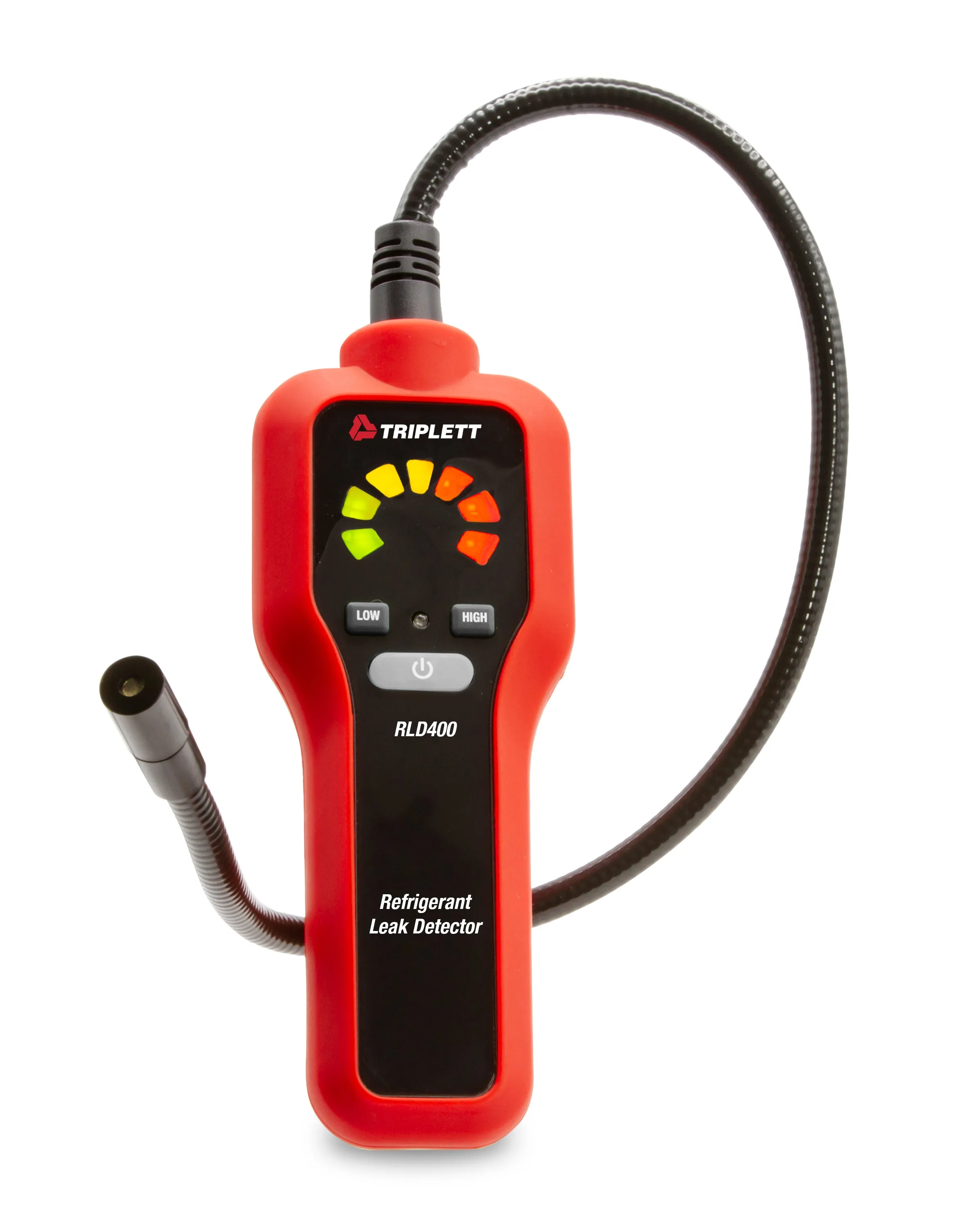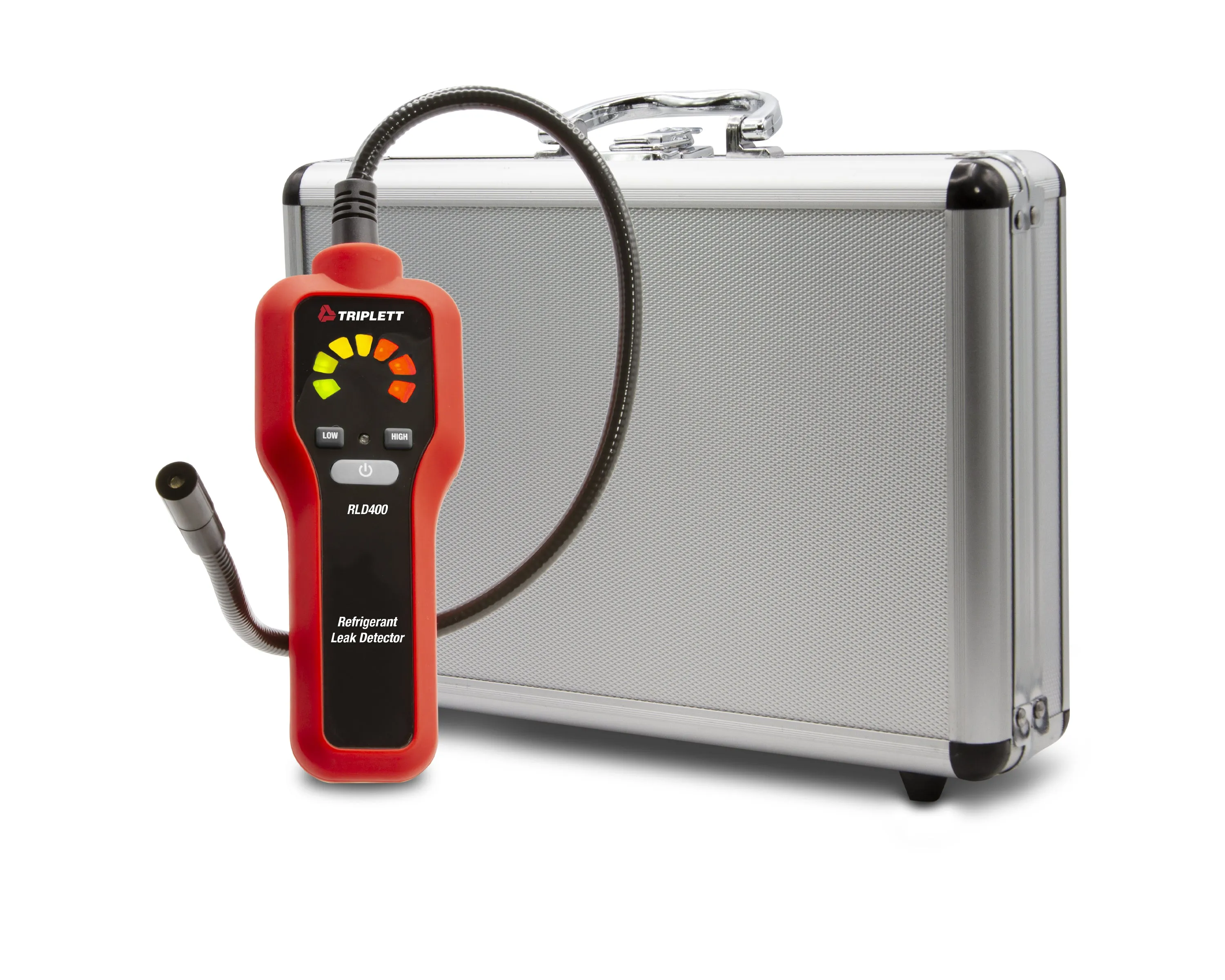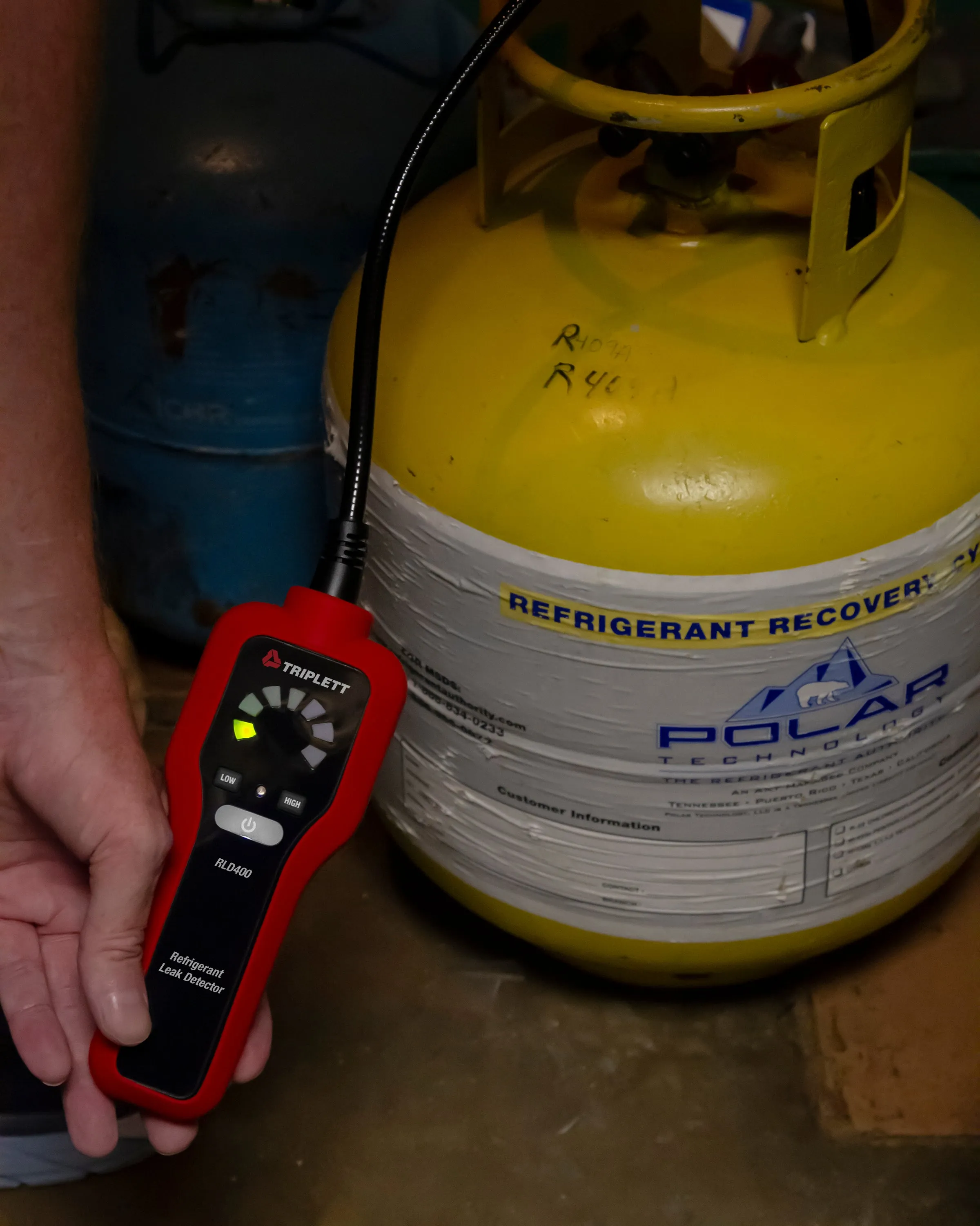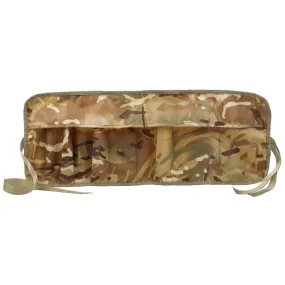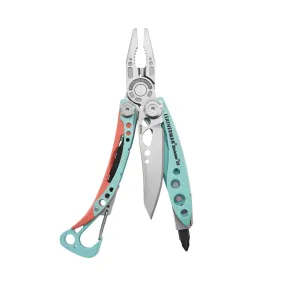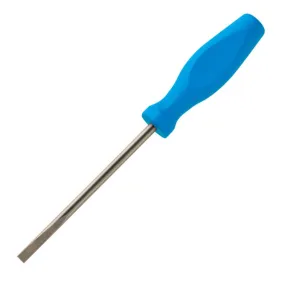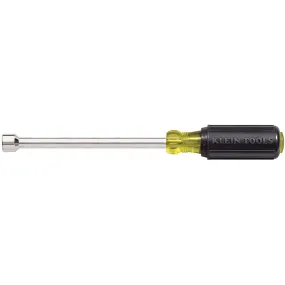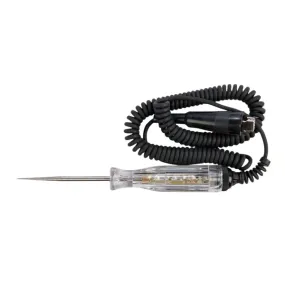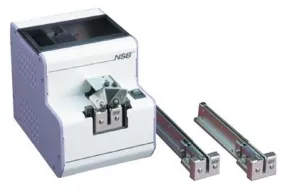The Triplett Model RLD400 detects SF6, HFC (R134 and R123), CFC and HCFC refrigerant leaks in Air Conditioning and Refrigeration Systems, plus halogen gas, ethylene, tetrafluoroethylene, trichloroethylene and most other compounds containing halogen.
DESCRIPTION
The Triplett Model RLD400 detects SF6, HFC (R134 and R123), CFC and HCFC refrigerant leaks in Air Conditioning and Refrigeration Systems, plus halogen gas, ethylene, tetrafluoroethylene, trichloroethylene and most other compounds containing halogen. It features a replaceable heated-diode sensor (RLD400-S), High/Low Sensitivity, 7 LED three-color visual leakage level indicators with audible alert, and fresh air calibration reset. The 19.8" (50.2cm) gooseneck probe can be used to chek in hard-to-reach areas. It has a low battery indicator and an auto power off function (after 10 minutes) to conserve battery life. Designed to SAE J1627. Complete with sensor (installed), leak test bottle, 9V battery, and protective hard carrying case. 1 year warranty.
Features
- Pinpoint refrigerant leaks in Air Conditioning and Refrigeration Systems
- Detects SF6, HFC (R134 and R123), CFC and HCFC refrigerants, and most other compounds containing halogen
- Replaceable heated-diode sensor (RLD400-S)
- High/Low Sensitivity
- 7 LED three-color visual leakage level indicators
- Fresh air calibration reset
- 19.8" (50.2cm) gooseneck probe
- Low battery indicator
- Auto power off (after 10 minutes)
- Designed to SAE J1627
- Complete with sensor (installed), leak test bottle, 9V battery, and protective hard carrying case
- 1 year warranty
Specification
| Refrigerants | SF6, HFC (R134 and R123), CFC and HCFC refrigerants, halogen gas, ethylene, tetrafluoroethylene, trichloroethylene and most other compounds containing halogen |
| Sensor | Replaceable heated diode (RLD400-S) |
| Accuracy | 0.1oz/year (2.8g)/year |
| Sensitivity Levels | High: 0.2oz/year (6g/year) Low: 1.05oz/year (30g/year) |
| Response Time | Instantaneous |
| Warmup Time | 2 minutes |
| Power | 9V Battery |
| Dimensions | Meter: 7.3 x 2.8 x 1.4” (185 x 72 x 35mm) Sensor with Gooseneck: 20.5” (520mm) long Probe Diameter: 0.32” (8mm) |
| Weight | 12oz (340g) |
Downloads
FAQs
-
Q. What is a refrigerant leak detector?
A. A refrigerant leak detector is a specialized device used to detect leaks of refrigerant gases, such as Freon, in air conditioning, refrigeration, and HVAC systems. It helps identify and locate leaks to prevent further refrigerant loss and ensure the efficient operation of the system.
-
Q. How does a refrigerant leak detector work?
A. It uses various technologies, such as heated diode sensors, infrared sensors, or ultrasonic sensors, to detect the refrigerant leak. When a leak is detected, the device alerts the user through visual or audible indicators, enabling prompt repairs to prevent further loss.
-
Q. Can a refrigerant leak detector be used for Freon leak testing?
A. Yes, a refrigerant leak detector is suitable for Freon leak testing. Freon is a commonly used refrigerant in HVAC and refrigeration systems, and the leak detector can effectively detect Freon leaks, enabling quick identification and repair of any issues.
-
Q. What are the applications of an HVAC leak detector?
A. An HVAC leak detector is used in various applications, including residential, commercial, and industrial HVAC systems. It helps detect leaks in air conditioning units, heat pumps, refrigeration systems, and other HVAC components, ensuring optimal performance, energy efficiency, and environmental safety.
-
Q. What is AC Leak Detector?
A. An AC leak detector, also known as an air conditioning leak detector, is a specialized device used to detect refrigerant leaks in air conditioning systems. It helps identify and locate leaks in the refrigerant lines or components of an AC system, such as the compressor, condenser, or evaporator coil.
-
Q. What features should I consider when choosing an AC leak detector or HVAC leak detector?
A. When selecting an AC or HVAC leak detector, consider features such as sensitivity levels, detection methods, response time, portability, ease of use, visual and audible indicators, and compatibility with different refrigerants.




